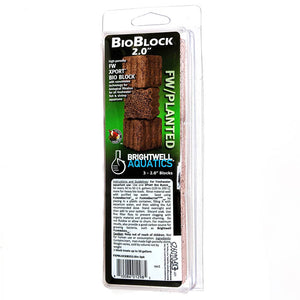Your Cart is Empty
🚚 Flat-Rate FedEx Priority Overnight — Just $26.99 (Limited-Time Special!) | FREE over $200







Xport Bio Blocks for Freshwater Aquariums were designed to withstand pH ranges below 7. These cubes can also be used in aquariums with a pH above 7. Xport Bio Blocks have the largest surface area out of any media for housing beneficial bacteria. We have been testing this product in our 480 gallon shrimp tank since November of 2018 with amazing results.
Usage:
Key Features: